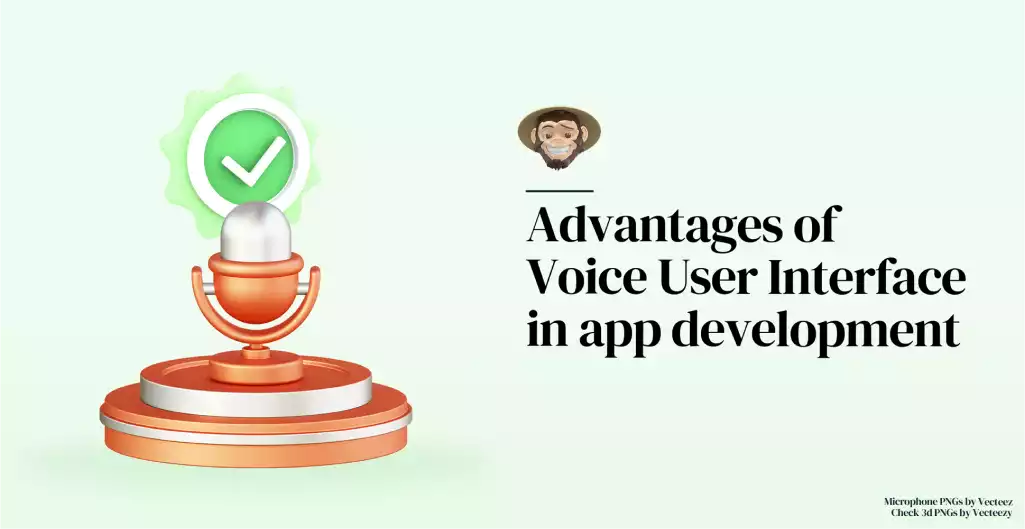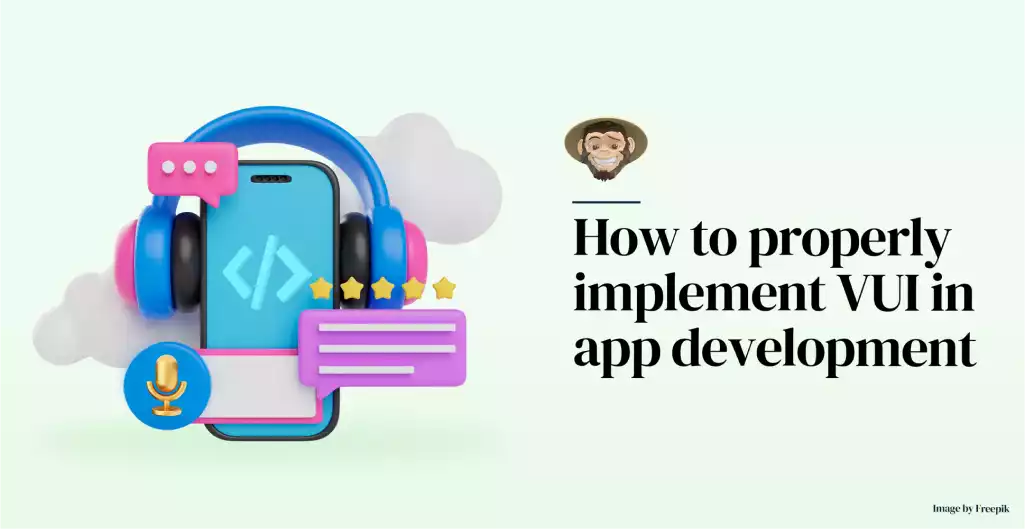As technological innovations continue to redefine how we interact with our devices, the app development landscape introduces new experiences to make IT-based products more valuable.
Saying that modern technology has transformed the way we live is the understatement of the decade. In just a couple of decades, we went from dial-up internet with very limited navigational avenues to smartphones that fit in our pockets and applications that basically perform every task for us. Today, technology is as necessary as the air we breathe, and it has shaped our lives to the point where we can’t even fathom spending one single day without those little lifelines we call smartphones. Similarly, technology has also shaped how we see and interact with our devices. Similarly, technology has also shaped how we see and interact with our devices. We have witnessed so many groundbreaking advancements that we have become reliant on app developers to keep surprising us. Why? Because what we can do now via innovative applications and extraordinary functionality doesn’t even come close to what mobile phones could do ten years ago…and that’s pretty exciting! Among these groundbreaking advancements in modern app development is the integration of Voice User Interface (VUI).
VUI is an excellent way of allowing users to communicate seamlessly with their devices, applications, and other users and has become an integral part of our daily lives. This time around, we will delve into the world of VUI to explore the concept of Voice User Interface in app development, its benefits, challenges, and the way it enables hands-free interactions for users. Let’s go!

What is Voice User Interface?
Voice User Interface, or VUI for short, is a technology that allows our users to interact with their mobile devices, computers, laptops, or applications using spoken language in the form of voice commands, simulating a conversation-like interaction between humans and machines. VUI technology is designed to recognize, understand, and process human speech, translating spoken words into text and then into actionable commands or responses so the application or device can perform the action requested by the user.
VUI has gained significant prominence these past years, especially since top internet companies such as Google, Amazon, and Microsoft started developing their own voice-enabled assistants and devices. Actually, research shows that 50% of the US population uses voice interface features on a daily basis, with over one-third using them at least once a week! These staggering usage rates led to the rise of the virtual assistants and smart speakers that we know and love. From Amazon’s Alexa and Apple’s Siri to Google Assistant and Microsoft’s Cortana, these platforms use Voice User Interface to collect, analyze, understand, and translate user queries, provide relevant and customized information, perform specific tasks, and control other smart devices, all through the user’s natural spoken language.
This immense popularity rise is also partly due to the unparalleled convenience it offers to its users by replacing traditional and less comfortable gestures such as swiping, touching, and typing with simple voice commands. It also provides users a hands-free, highly accessible, user-friendly, and intuitive way of interacting with technology. What’s not to love?

How does Voice User Interface work?
VUI operates on a combination of the principles of natural language processing (NLP), speech recognition, and machine learning (ML) to allow systems not only to capture and understand human language but also to interpret context, intent, and user preferences. Moreover, when integrated into mobile applications and other software, VUI systems can be trained to handle a wide range of tasks, from searching the internet and setting reminders to making phone calls, scheduling appointments, and providing weather updates. Here’s how VUI typically works.
1. Voice recognition: The first part of the VUI process begins when the user speaks a command into their device’s microphone. The command is converted into digital data thanks to speech recognition technology, which breaks it into smaller, individual phonemes.
2. Pattern extraction and modeling: The phonemes are analyzed for pitch, intensity, and duration to identify patterns in the speech. Afterward, a language model is used to study these patterns to build predictions and generate a range of possible text outputs. These outputs are then processed using NLP techniques to understand the user’s intent and determine the appropriate response.
3. Response: Once the system determines the user’s intent, it takes the appropriate action and generates a relevant response.
4. Feedback: The VUI system provides feedback to the user, which depending on the query, could range anywhere from spoken responses to visual displays.
By leveraging AI and machine learning, modern VUI systems can also learn from constant user interactions and feedback, which allows them to not only adapt to each individual user’s speech patterns and preferences but also provide more accurate responses and feedback.

Advantages of Voice User Interface in app development
App developers leverage the perks of Voice User Interface and integrate them into mobile and software applications to offer users a very convenient, hands-free, and user-friendly way of interacting with technology. It provides a range of benefits that help enhance the user experience of all types of applications and makes interactions with devices and technology more convenient and accessible. Here are some of the critical advantages of VUI:
Personalization opportunities: As mentioned earlier, VUI systems can learn from constant user interactions and identify their preferences accordingly, which leads to much more unique and personalized responses, recommendations, and overall user experiences.
Hands-free experiences: Since Voice User Interface in app development allows users to interact with their devices and applications via voice commands and without needing to touch their screens or type commands physically, it delivers hands-free interactions, which are particularly useful in situations where, for any reason, hands-on interactions are not possible, such as when the user has a physical disability or while driving.
Accessibility: Since VUI works via voice commands, it empowers users with physical limitations to enjoy, access, and use applications, devices, and technology. For instance, people with visual impairments, physical restrictions, or other motor disabilities can effectively use voice commands to use their devices and apps, successfully promoting inclusivity and accessibility.
Multitasking: By using Voice User Interface in app development, we can help our users perform their daily tasks while keeping their hands and eyes free, allowing them to enjoy seamless multitasking benefits.
Increased security: While VUI systems themselves require robust security measures to function appropriately, they can still bolster overall app and device security. For instance, they can be integrated with voice biometric authentication, which works by analyzing the characteristics of a user’s voice to verify their identity. This way, VUI can help strengthen the security of applications and devices by adding an additional layer of authentication.
While evidently, VUI has the potential to revolutionize a lot of aspects of how we interact with our applications and devices; it’s important to note that proper implementation and continuous monitoring of this technology is essential to make sure it delivers these, and many other benefits it brings to its users. Robust security measures, user education, and a strong focus on privacy are some key elements to keep in mind to ensure that Voice User Interface in app development always brings positive experiences.

Challenges of Voice User Interface in app development
So, while Voice User Interface offers numerous benefits, it also presents some challenges that app developers must address when and before integrating VUI into app development. These are the main ones.
Language ambiguity concerns: Spoken language can be ambiguous, especially when users get comfortable with VUI technology and speak lingo or use voice commands that can have different meanings based on context. For this reason, app developers must make sure to implement VUI systems that can interpret ambiguous commands or ask the user for clarification if needed.
Integration issues: Integrating Voice User Interface systems with a user’s existing applications can be complex. As enforcers of this technology, app developers must ensure seamless integration using robust APIs, relevant development practices, and proper software architecture.
Accuracy challenges: While VUI systems keep getting more accurate, there are still issues with achieving high accuracy in speech recognition software. These systems still experience errors in recognizing commands, especially in noisy environments or with users who have accents or speech variations, which, more often than not, leads to frustration and a poor user experience.
Privacy concerns: As always, whenever we deal with applications or technologies that collect and process data, privacy concerns are brought to the surface. Developers must be transparent and clearly state the conditions for data processing so that, if some users are hesitant to use VUI or are worried about their voice data being stored or misused, you can put them at ease and not hinder the adoption of applications.
Addressing these and some other challenges that come with the adoption of Voice User Interface technology requires app developers to take an approach that combines advanced development technologies, efficient planning, proper user testing, and of course, continuous improvement.

How to properly implement VUI in app development
VUI’s benefits can be amplified when properly implementing it in app development. Alternatively, avoiding or correcting most of the abovementioned challenges requires careful planning, designing, implementing, and executing the voice technology to ensure a seamless and user-friendly experience. Here are our recommendations to help you properly implement VUI in your app.
Take a user-centric approach to app design: You must always prioritize user research to make sure you clearly understand their needs and preferences when designing VUI interactions. This research must guide all your VUI-related design decisions.
Choose the best platform: When implementing VUI technology in your app, you must choose the best platform that suits your and your user’s need, and best adapts to your application. Some popular platforms you can select include Amazon Alexa and Google Assistant, but you can also try integrating with your custom VUI solution. Either way, choosing the correct platform will allow us to correctly plan the conversational flow and design a dialogue that feels natural and intuitive and guides users through the interaction.
Optimize speech recognition: Ensure that your VUI system can not only understand and retain context from previous interactions but also learn and provide relevant feedback and responses. For this, you must implement robust speech recognition and natural language processing technologies that can accurately understand user input regardless of ambiguity or accents. Doing so will allow your VUI system to be coherent and have meaningful, human-like conversations with users.
Test and iterate: As always, testing is non-negotiable when implementing Voice User Interface in app development. You must test your VUI system extensively and continuously throughout your entire development process. You could also benefit significantly from testing your VUI-based functionality on real users because it allows you to gather more accurate feedback and more effectively identify pain points, refine the conversation flow, and improve the overall accuracy of the responses. Lastly, you must regularly update your VUI system to keep your app optimized and address any technical issues that may arise.
By following these tips and others we may have missed, you can ensure you take a user-centric approach to implement your VUI system, allowing you to implement this technology in your application successfully, enhance its user experience and engagement, and deliver a more intuitive and convenient interface.

Final word
There’s no denying that Voice User Interface has emerged as a transformative force in the app development arena and its benefits are extensive. From breaking down barriers and enhancing accessibility to streamlining complex tasks, providing a more natural and personalized user experience, and redefining how users engage with digital platforms, VUI helps us harness the power of natural language to more intuitive hands-free conversational interactions. Yes, this transformation doesn’t come without its challenges. Still, with the right approach to VUI implementation, proper user research, transparent and robust technological foundations, and overall good practices, we can make sure this technology delivers its benefits in full force!
We at Foonkie always strive to stand at the forefront of innovation and foster the latest technologies to deliver robust applications with outstanding user experiences. So, if you want us to work together on your new app idea, let’s talk!
